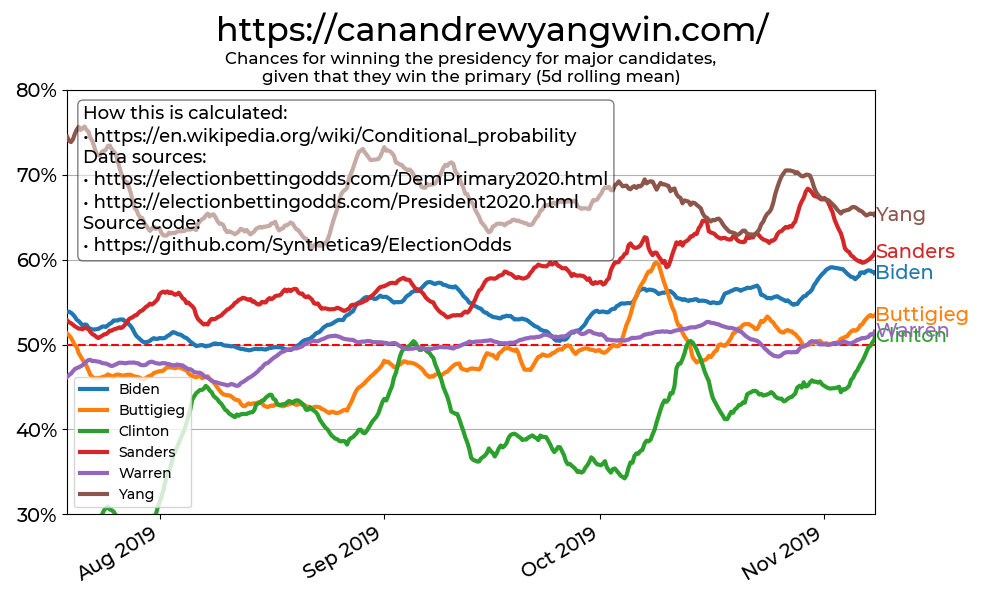
Andrew Yang has a better chance than all the democratic frontrunners to beat Donald Trump.
The graph above that compares the different candidates' odds of beating Trump in the general election is generated from betting market odds.
Why use betting markets over polls?
- Betting markets generally perform better than polls, especially earlier in the election cycle.
- During the primaries, not all candidates are polled against the opposing party's incumbent candidate. If we were to use polls to determine ability to beat Trump, there would be very little data on many of the candidates.
If you'd like to know more, you can check out this research paper that compares prediction markets with polls.
"Andrew Yang is polling at 2-3%. He can't possibly beat the front-runner and win the Democratic primary." Or could he?
In primary history, there have been plenty of examples of an unlikely underdog winning the nomination. Let's take a look (Keep in mind, Andrew Yang is at 5th place in some DNC qualifying polls):
1976 Election: Democratic Primaries
Data from fivethirtyeight.com
In the 1st half of 1975, Jimmy Carter was in 16th place out of 18 candidates. His polling number? A whopping 0.8%
In the 2nd half of 1975, Jimmy Carter moved up to 13th place.. out of 13 remaining candidates.
Oh, and his polling number had actually dropped to 0.5%
In 1976, Jimmy Carter won the primary with 40% of the vote
1992 Election: Democratic Primaries
Data from fivethirtyeight.com
In the 1st half of 1991, Bill Clinton was tied for 11th place out of 18 candidates. He polled at 1.3%
In the 2nd half of 1991, Bill Clinton's polling improved dramatically to 7.4%, putting him in 4th place
In 1992 he won the Democratic primary
2004 Election: Democratic Primaries
Data from cbsnews.com
December 17, 2003, John Kerry was in 6th place in the Democratic primaries, polling at 4%
In 2004 he won the Democratic primary
2008 Election: Democratic Primaries
Data from realclearpolitics.com
January 1, 2008, Obama trailed Clinton by more than 20 points
A few months later he would go on to win the Democratic primary
2016 Election: Republican Primaries
Data from realclearpolitics.com
July 11, 2015, Donald Trump was in 7th place in the Republican primaries, polling at 6.5%
In just a week, Trump leapt into 1st place
2022 London Data
Data from London City Council department of Statistics
Living in London usually involves commuting, seeing swarms of tourists nearly every single day, being surrounded by some of the most fascinating tourist attractions in the world and, of course, making regular visits to the pub. Those of you who are new in London or are planning to soon visit the English capital, might be interested to learn that the city has a pub culture that goes back centuries. If you are considering moving to the Big Smoke, it would be a good idea to rely on a week round quality South-West London removals like Andy Removals, as well as to familiarize yourself with the UK capital’s pub life, traditions and history.